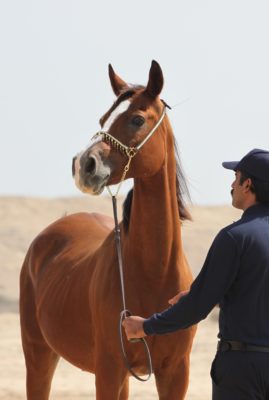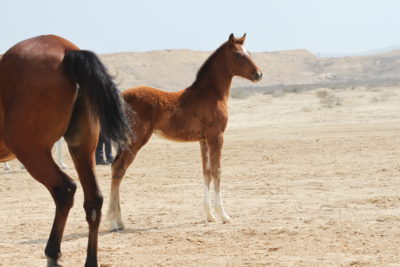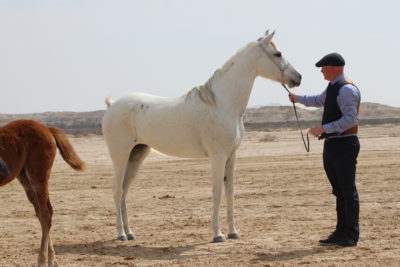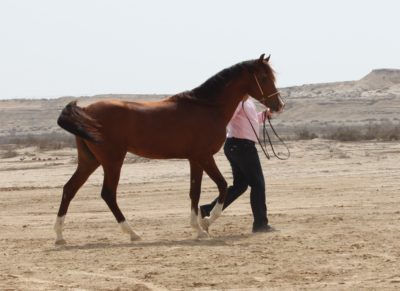Jellabieh Soroog and offspring at Royal Stud, Bahrain
Jellabie Soroog 1169, bay mare, born 2000, by Mlolshaan Areen 827 out of Jellabieh Al Anoud 889 and her colt Jellaby 1783, bay, born 2016 by Rabdaan Sary Al Leil 1090
Jellabieh Malaha 1548, grey mare, born 2008, by Shawaf al Betaar 953 out of Jellabieh Soroog 1169
Jallabieh Ghabra 1622, grey mare, born 2010, by Shawaf Al Betaar 953 out of Jellabieh Soroog 1169
Jellaby 1704, bay stallion, born 2014, by Shuwaimaan Sadeq 1117 out of Jellabieh Soroog 1169






Beautiful horses. Straight profiles. Very interesting to see. Thank yo.
i find it interesting that the dish has become such a pronounced feature..when i believe actually in historical paintings and patient observations -the arabian in movement gives the appearance of a dish when the nostrils are’flared’…giving the impression of dishyness. a simple misunderstanding has given way to extreme fashion of the extreme dish face.
Obviously, there were some with “dishes.” For example, the Davenport import, *Abeyah. But there are also horses with pronounced jibbah (although the placement might vary). That, combined with the large jowl and smaller and more flexible muzzle, gives an overall appearance of a dish. What is being done fashionable now is grotesque.
Old descriptions of Arab horses with smaller heads, level croups, etc., were always in comparison to the hot blooded horses the writers were familiar with. It wasn’t a competition to make the croup tip up or to find the smallest head.